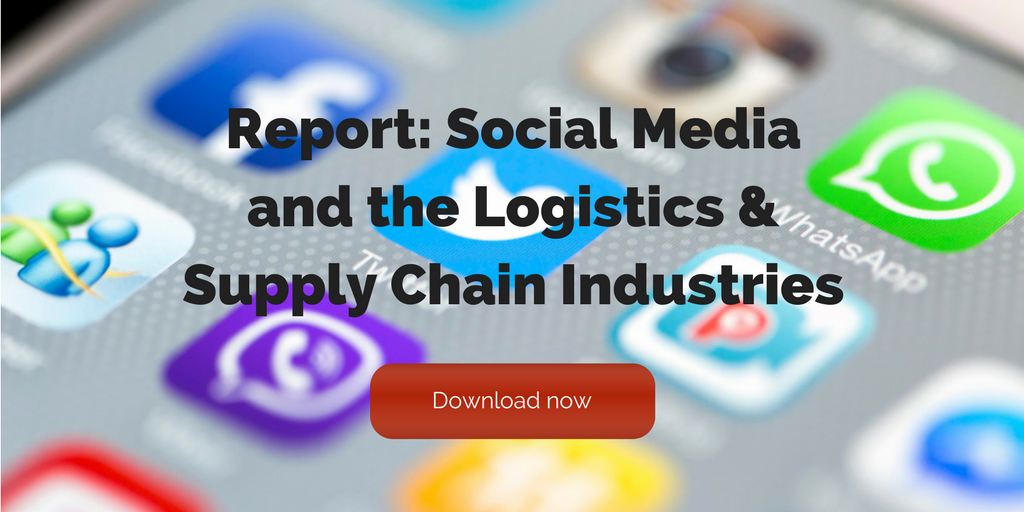![[Infographic] Content Marketing in Manufacturing: What Works, What Needs Work](https://www.fronetics.com/wp-content/uploads/2024/10/Infographic-content-marketing-in-manufacturing-801x675.png)
by Fronetics | Aug 11, 2015 | Blog, Content Marketing, Manufacturing & Distribution, Marketing, Social Media, Supply Chain
Manufacturing is experiencing a graying of its industry. With millions of workers at or near retirement age, many top posts are occupied by workers who have seen radical changes in the workplace over the course of their careers. And while executives have largely embraced advances in technology to transform the operations side of manufacturing, research shows they’ve been slow to adapt marketing and sales processes using emerging digital tools and technology.
Earlier this year the Content Marketing Institute released its annual report on the current state of content marketing within the manufacturing industry. This year’s report shows that the manufacturing industry continues to make strides in leveraging digital tools for sales and marketing purposes. Still, because these efforts are fairly new, the report also captures a sense of ambiguity about these new marketing strategies, particularly when it comes to measuring program success. Other notable findings from the study reveal that more than two-thirds of manufacturers are using content marketing to build brand awareness, boost sales, and generate leads. The report also uncovers some marked changes between the most recent report and last year’s report; there has been a shift in both the way manufacturers are choosing to distribute content and their perceived effectiveness of those tactics.
Check out our Infographic for a more detailed look at the report’s findings:

Fronetics Strategic Advisors is a leading management consulting firm. Our firm works with companies to identify and execute strategies for growth and value creation.
Whether it is a wholesale food distributor seeking guidance on how to define and execute corporate strategy; a telematics firm needing high quality content on a consistent basis; a real estate firm looking for a marketing partner; or a supply chain firm in need of interim management, our clients rely on Fronetics to help them navigate through critical junctures, meet their toughest challenges, and take advantage of opportunities. We deliver high-impact results.
We advise and work with companies on their most critical issues and opportunities: strategy, marketing, organization, talent acquisition, performance management, and M&A support.
We have deep expertise and a proven track record in a broad range of industries including: supply chain, real estate, software, and logistics.


by Fronetics | Aug 6, 2015 | Blog, Logistics, Marketing, Social Media, Supply Chain, Transportation & Trucking

Transportation and logistics is a field that is booming. The business is a money-maker and a cornerstone of day-to-day functioning. It’s one that has been present for centuries. We are well past the Age of Discovery, but transportation and logistics companies carry on the torch of moving products that people need and desire around the world. One might wonder if the sultriness of the Silk Road and the Spice Trade has lost its allure and sexiness, but that needn’t be the case. Social media has brought about a fantastic opportunity for transportation and logistics companies to share their successes, display their offerings, create community, and convert leads.
Where to Start
First, think about it. Many transportation and logistics companies think about social media and how to use it, but cite a lack of time as a reason they haven’t explored the various platforms. Thinking about how social media can work for your logistics or transportation company is the first stop towards progress.
Second, learn about it. Understanding individual usage of social media versus B2B usage of social media is important. Do your consumers use LinkedIn, Facebook, Twitter? Where are your competitors finding success, and what platforms are they missing? Once you figure these things out the impulse will be to get started. Post away! Tweet away! Blog away! However, creating a Facebook page or a Twitter account will not draw in your community of employees or existing clients, and will not attract potential customers or clients. Having an account is great thing, but it’s not the most important thing. Knowing how to express your brand, what content to curate and create, and how frequently to share content is critical to social media success.
Learning is a process and takes time. Set up also takes time. Hiring an outside agency to do this work can both save you time, and will ultimately reap ROI. Marketing strategy companies have been doing this work already, and understand how to highlight your company. They know the market, and once they get to know you a bit better, you can work together to figure out how to express your brand through the platform of social media.
What to Highlight
Once you figure out who to focus on and how to reach that community, creating and curating your unique content is key. What is most informative and helpful to your clients? What will feel meaningful to them? What will catch and hold their attention? How do you want people to perceive you, your employees, and your products/services? Some studies have shown that conversion rates from social media can be 100% more effective than from outbound marketing, so getting this right could greatly benefit your company.
The joy of social media is its speed and its ability to humanize a company. A company’s Twitter feed is not like its white papers. Social media is known for personalizing things, so let people know the more human side of your business. Who are the drivers? Who are the employees? What are the success stories? Celebrate your community, partners, and clients. This is a place to engage with other businesses – to educate them and learn from them.
One perfect example of a logistics company that thrives in this arena is UPS. The logistics company has found success with unique, fun, interesting, frequent posts, tweets, and blogs. They also highlight their “heroes” by telling stories, often through video, of their heroic drivers who have been known to save lives. They show the human side of delivery. They connect. And when it comes to social media, it’s all about connection.
Two other examples of companies that excel in this area are Sourcemap and Transfix. Both companies have leveraged social media as a platform for growth. Sourcemap’s founder and CEO Leonardo Bonanni credits social media for the success for his business: “Sourcemap wouldn’t be here without social media.” For Transfix, social media and digital technologies enables the company to make the trucking industry more efficient and user-friendly.
Fronetics Strategic Advisors is a leading management consulting firm. Our firm works with companies to identify and execute strategies for growth and value creation.
When it comes to marketing we work with our clients to create and execute strategies that drive success and elevate their brand position within the industry. Unlike other firms, we align marketing programs with business objectives and, through a data driven approach, are able to deliver results with a targeted ROI. Our team is comprised of strategists, marketing professionals, writers, designers, and experts in social media. Together we leverage our experience to increase brand awareness, position our clients as thought leaders, drive meaningful engagement with prospects and customers, and help businesses grow.



by Fronetics | Aug 4, 2015 | Blog, Content Marketing, Logistics, Marketing, Supply Chain

Do reverse logistics companies need to focus on content marketing? Yes.
Should they use LinkedIn? Yes. Twitter? Yes. YouTube? Yes. Yes. Yes. Should they blog? Yes!
Several reverse logistics companies are already using content marketing in an effort to connect with peers and potential B2B consumers. IT Asset Disposal (ITAD) company, TradePort, has an informative blog and utilizes LinkedIn, Facebook, and Twitter. The large 3rd-party logistics (3PL) company, Unyson, utilizes the top B2B social media outlets with just under 2,000 followers on Twitter and just over 3,000 followers on LinkedIn. On the homepage of their website you can view a running tally of how much money they have saved their customers. At the time of the writing of this blog it’s at $2,055,763,398.
What the studies show:
The Content Marketing Institute reports that 8 out of 10 people identify themselves as blog readers, and 23% of all time spent online is spent on social media sites. With the rise of the blog, companies have gotten smart about how to reach their current and potential consumers. According to Forbes, many brands are moving their advertising budgets from television to online videos.
In the B2B world things are changing, too, with many executives wanting to gain information through other mediums. The Content Marketing Institute also reports that a majority (80%) of business decision-makers prefer to get information from articles rather than through advertisements.
We know that inbound marketing is effective in garnering consumers’ attention. It’s aligned with a generation of people who want to be educated about the products they’re buying and who are willing to search for those products online. Even with all of this known, it’s important to ask: what is the ROI when it comes to content marketing?
Return on Investment
In order to calculate ROI, the cost of content marketing needs to be assessed:
- salaries (if going in-house)
- marketing agency or contractor services
- additional overhead
- distribution costs
- design and publication software
After those costs have been calculated, the next step is to subtract that number from the revenue generated. The Guardian has put forth its simple content marketing ROI calculator:
(Revenue Generated – Cost of Content Marketing) / Cost of Content Marketing = ROI
According to the newspaper, “A simple calculation could say that you drove 1000 visits through a piece of content, and Google Ads would have cost £1 per click, e.g. £1000 to equal the same. If the content only cost £500, you have a saving!”
But with most seemingly simple things, there’s complexity underneath. Dig deeper and ask more questions:
- Is the money you’re spending on inbound marketing deterring other, less obvious, costs?
- Would it have cost you more through outbound marketing methods to achieve that same level of visibility than through inbound marketing solutions?
- Is inbound marketing bringing in customers or closing a deal more quickly than alternative methods (time is money, after all)?
- Is inbound marketing cutting down the need for staffing in other areas, such as support staff to manage inquiries or support calls?
Some incalculable values from inbound marketing, like consumer preferences, content intelligence, customer relationship strategies, and branding can be hard to tie to a number, but over time you will see that your ROI will become more clear to you as you generate leads, turn leads into customers, and see the result in the form of money gained (American dollars or British pounds!).
There are several ways to measure ROI. Reverse logistics will continue to grow in importance as regulations increase and the environment continues to come to the forefront as an ethical and practical issue. Content is king, so consider it, measure it, and go for it.
Fronetics Strategic Advisors is a leading management consulting firm. Our firm works with companies to identify and execute strategies for growth and value creation.
When it comes to marketing we work with our clients to create and execute strategies that drive success and elevate their brand position within the industry. Unlike other firms, we align marketing programs with business objectives and, through a data driven approach, are able to deliver results with a targeted ROI. Our team is comprised of strategists, marketing professionals, writers, designers, and experts in social media. Together we leverage our experience to increase brand awareness, position our clients as thought leaders, drive meaningful engagement with prospects and customers, and help businesses grow.

![Workplace diversity impacts the bottom line [Infographic]](https://www.fronetics.com/wp-content/uploads/2024/10/Workplace-Diversity-Fronetics-Infographic-795x675.jpg)
by Fronetics | Aug 3, 2015 | Blog, Diversity, Leadership, Strategy
“A diverse organization will out-think and out-perform a homogeneous organization every single time”. A. Lafley, CEO – Procter & Gamble
Recent research conducted by McKinsey & Company found that when it comes to the bottom line, diversity matters. Specifically, companies in the top quartile for gender diversity are 15% more likely to have financial returns above their respective national industry medians, and when it comes to ethnic diversity the financial returns are even greater – 35%. McKinsey & Company note that “correlation does not equal causation;” however, “the correlation does indicate that when companies commit themselves to diverse leadership, they are more successful.”
Why are diverse companies more successful? McKinsey & Company believe diverse companies are better able to attract and retain top talent, improve their customer orientation, and have higher employee satisfaction rates than companies that are not diverse. Arrow Electronics’ Cathy Morris points to an additional reason: “Diversity enables better decision-making and diminishes groupthink.”
Workplace diversity has a significant and positive impact on the bottom line – and on the day to day success of your company. How diverse is your company? What can you do to increase diversity within your company?
![Workplace Diversity [Infographic]](https://www.fronetics.com/wp-content/uploads/2024/10/Workplace-Diversity-Fronetics-Infographic-scaled.jpg)
Fronetics Strategic Advisors is a leading management consulting firm. Our firm works with companies to identify and execute strategies for growth and value creation.
We advise and work with companies on their most critical issues and opportunities: strategy, marketing, organization, talent acquisition, performance management, and M&A support.
We have deep expertise and a proven track record in a broad range of industries including: supply chain, real estate, software, and logistics.


by Fronetics | Jul 30, 2015 | Blog, Marketing, Social Media

For decades, companies have relied on the recommendations of friends and family to acquire new customers and grow sales. Social media is now transforming how these recommendations are shared and given companies a way to directly interact with customers. With more than 1.9 billion monthly active users, Facebook is helping businesses amplify their marketing efforts in the places where their leads and prospects are spending their time. In fact, according to an annual report generated by the Content Marketing Institute and MarketingProfs, 84% of companies are using Facebook to distribute their content and promote their brand.
Today, Fronetics is announcing the addition of Facebook to its social media catalog. Click over and like Fronetics Strategic Advisors for up-to-date information on business strategy, marketing and sales, industry notes, blog content, and company announcements. Find Fronetics Strategic Advisors updates on Twitter, too. Follow @Fronetics. And find us on LinkedIn at https://www.linkedin.com/company/fronetics.
To celebrate the launch of our Facebook account, enjoy our top tips for using Facebook to market your business:
- Use the 80-20 rule. 80% of your posts should generate engagement – only 20% of your posts should be sales-focused
- Be sure to add a profile picture
- Use the “About” section to provide relevant company information
- Use photos and videos in posts – they’re likely to get the most views
- Don’t limit posts to only your business – share posts from partner businesses
- Experiment with different posting times to find what’s ideal for your target audience
- Respond to comments posted to your page
- Buy Facebook ads to capture attention
- Use a Call-To-Action button in the landing tab of your page
- Insert a Share Button on posts to encourage sharing of your content
Using Facebook is a great way to get found by visitors searching for your products or services. If you create a community that connects and engages with followers in meaningful ways, you’ll turn followers into leads and leads into customers.
Fronetics Strategic Advisors is a leading management consulting firm. Our firm works with companies to identify and execute strategies for growth and value creation.
Whether it is a wholesale food distributor seeking guidance on how to define and execute corporate strategy; a telematics firm needing high quality content on a consistent basis; a real estate firm looking for a marketing partner; or a supply chain firm in need of interim management, our clients rely on Fronetics to help them navigate through critical junctures, meet their toughest challenges, and take advantage of opportunities. We deliver high-impact results.
We advise and work with companies on their most critical issues and opportunities: strategy, marketing, organization, talent acquisition, performance management, and M&A support.
We have deep expertise and a proven track record in a broad range of industries including: supply chain, real estate, software, and logistics.

![[Infographic] Content Marketing in Manufacturing: What Works, What Needs Work](https://www.fronetics.com/wp-content/uploads/2024/10/Infographic-content-marketing-in-manufacturing-801x675.png)






![Workplace diversity impacts the bottom line [Infographic]](https://www.fronetics.com/wp-content/uploads/2024/10/Workplace-Diversity-Fronetics-Infographic-795x675.jpg)
![Workplace Diversity [Infographic]](https://www.fronetics.com/wp-content/uploads/2024/10/Workplace-Diversity-Fronetics-Infographic-scaled.jpg)
